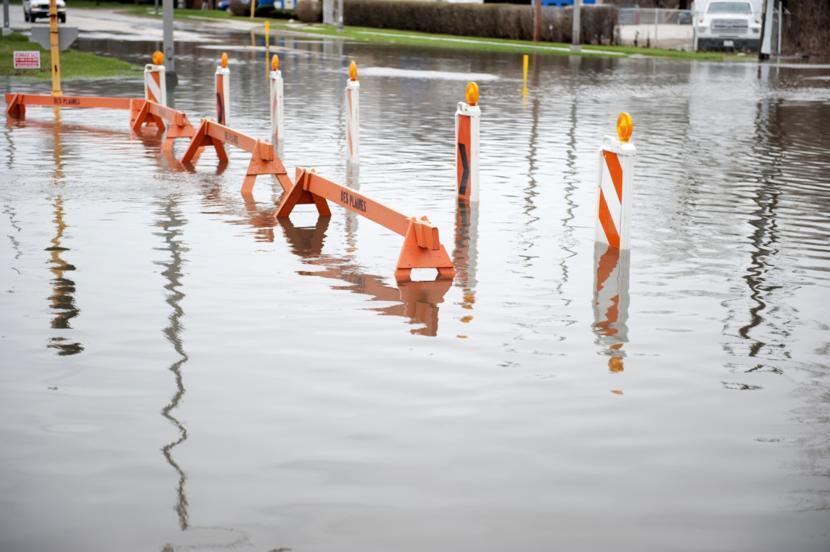Texas Nurses Association and Their Relief Efforts for Hurricane Harvey

The Devastation of Hurricane Harvey
On a Friday evening in late August, 2017, Hurricane Harvey made contact between Port Aransas and Port O’Connor of Texas. Following this landfall, the hurricane was classified as the first Category 4 hurricane to hit United States soil since 2004. The natural disaster’s specifications are astonishing, as it consisted of winds at speeds of over 130 miles per hour, while dropping around 50 inches of rainfall on both Texas and Louisiana land. Hurricane Harvey resulted in flash flooding, of which was felt in Arkansas, Tennessee, and Kentucky.
Beyond the statistics of the hurricane, the ultimate point of focus includes the vast amount of lives affected. The death toll has been reported to be 39, with uncertainty as to if all within the confines of the disaster have been accounted for. In addition to the families who are left with the coping of their loved ones, many more families must undergo the struggle for receiving the most fundamental of aide, such clean drinking water, shelter, and food. Due to its significant impact on the territory, rescuers and other form of help face challenges gaining access to those in need. This also comes with the unfortunate fact that all resources in the area are frighteningly scarce, as individuals of the impacted regions have quickly made an effort to obtain the necessary supplies.
How the Hurricane Formed
The origin of Hurricane Harvey is said to have come from the coast of Africa in the early part of August. Islands by the name of Lesser Antilles felt the storm as it passed through, wherein heavy rain and high winds were experienced. Following this, Harvey encountered substantially drier climate and a combination of winds in such directions that eventually led to advisories being administered by the National Hurricane Center on August 19th. The remainder of the weather carried on as it made its way north, where it crossed Mexico’s Yucatan Peninsula. The leftover from the developing hurricane slid back over the Gulf of Mexico, causing Harvey to form into what is known as a “tropical depression” on August 23rd. Two days later, the category 4 storm landed near the Texas Gulf Coast.
In terms of the storm’s characteristics, Hurricane Harvey’s beginnings contained slow movements, which led to a rapid growth in a relatively short amount of time. The result included a maximum observed water level of 6.71 feet, as seen at Port Lavaca. The Hurricane itself proved to be the strongest in the area since that of Hurricane Carla, which made landfall in September of 1961. The only other storm of Hurricane Harvey’s degree was one recorded near the Texas Coastal Bend, known as the Indianola hurricane that struck the town of Indianola in August 1886.
How People can Help
Through the fight for recovery, many in surrounding areas, as well across the nation, look to give a helping hand for those suffering through the aftermath of the historical hurricane. The support organizations have included a variety of local and national help. On the regional side of these organizations, the Hurricane Harvey Relief Fund offers help, of which is administered by the Greater Houston Community Foundation. Another example alike to this is the Boys and Girls Clubs of Greater Houston, who have opened their doors for victims facing the ultimate question of where to lay their heads at night. Some national organizations responding to the call of duty have included All Hands Volunteer, the American Kidney Fund, the American Cross, Americares, and Catholic Charities.
All Hands has dedicated their time to working on damaged homes, as well as ridding of any debris leftover from the storm. The American Kidney Fund is giving emergency financial grants to patients in need of dialysis. The American Red Cross, as with other organizations both locally and nationally, are accepting donations towards relief. Americares vowed to deliver medicine and various types of supplies to survivors. Catholic Charities provides items to eat, clothing, shelter, as well services pertaining to support for those of all religious backgrounds.
Of the organizations discussed above, one offers a unique way to help victims of Hurricane Harvey. They are known as the Texas Nurses Association who have created the opportunity to help the nation donate in order to provide aid for nurses affected by Hurricane Harvey. The donations collected by the foundation will go directly to nurses who reside in any one of the Texas counties that have been classified as disaster regions. The period of which donations are being accepted started on the 29th of August, with the end stated to be November 30th, 2017. The funds that remain by March 31st of 2018 will be given to the Hurricane Harvey Relief Fund, as mentioned above.
Donations to the foundation above presents a unique opportunity for the surrounding communities and the nation to help victims of Hurricane Harvey. Help can be provided for citizens of the United States that themselves help the lives of so many as their job. Giving can mean providing means for shelter and food, and can serve as the ultimate thank you for the service the nurses provide patients day in and day out.
Aside from providing monetary donations to the Texas Nurses Association, other opportunities exist to provide help to those in need. Specifically, these opportunities include the ability for nurses to physically volunteer. They are able to do so by registering through the Texas Department of State Health, within their Texas Disaster Volunteer Registry. The registry contains an option entitled “2017 Hurricane Harvey” under the “organization” tab. This information comes with a disclaimer though, as it is important to understand that the Texas State Board of Nursing will not directly accept volunteers, but are administering expedited temporary licenses for nurses who are not from states that are part of the Nurse Licensure Compact. This being said, unique ways in which people can help are ever more present, as long as the right steps are taken to ensure legality through the entirety of the process.
The Path Towards Recovery
No matter the speculation, the road to recovering from a truly historical natural disaster will be a long one. The path to such a large undertaking will require structures to be rebuilt, roadways to be cleared, supplies to be administered, and shelter to be provided. All of this is dependent upon the help provided by not only the nation at large, but also the help from nations worldwide. Also important for the rate at which the Texas regions affected are able to recover is the implementation of organized response teams. Up until this point, the affected areas have been able to receive the help of a wide variety of services. The continuation of this help will dictate when total relief will be achieved. Thanks to a variety of entities, both government-funded and private, the help needed has ultimately been put into place. As long as resources are to be used in an efficient manner, those in need can get the help they need and deserve. It really is times like these that a nation is able to come together for the good cause of maintaining humanity, a byproduct of the sincere actions that start with a variety of kind souls.














